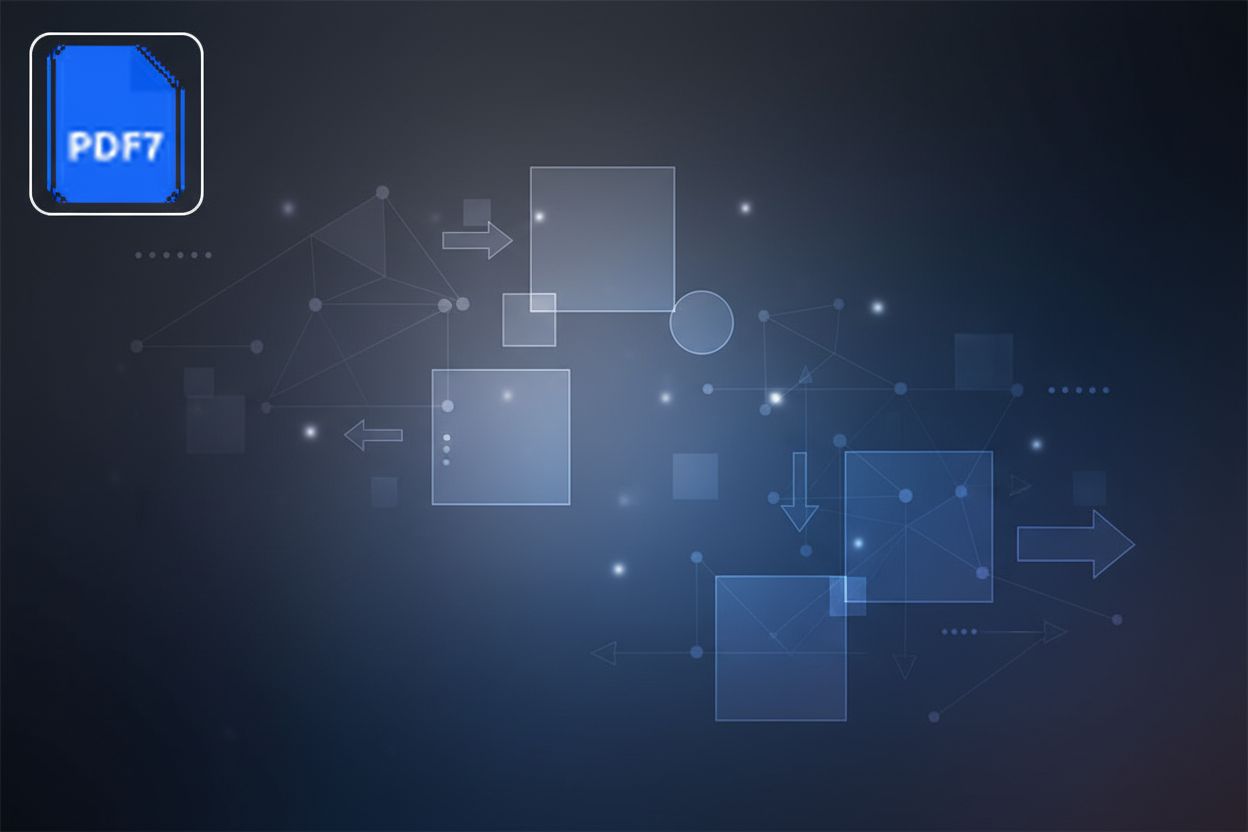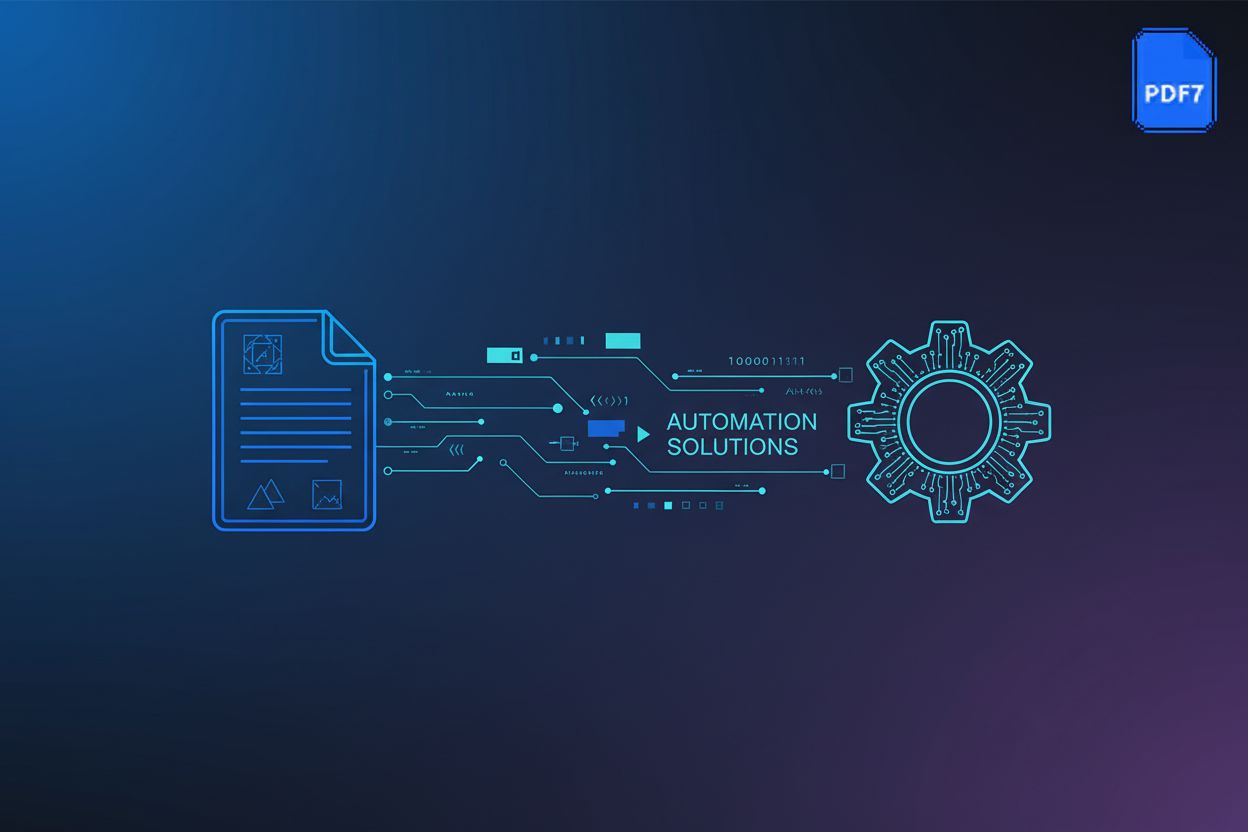PDF Watermarking and Redaction: A Comprehensive Guide for Professionals and Students
Understanding PDF Watermarking and Redaction
Did you know that a seemingly innocent PDF could be leaking sensitive information? PDF watermarking and redaction are essential tools for safeguarding your documents in today's digital landscape. Let's dive into why these processes matter.
Watermarking involves adding visible or invisible overlays to your PDFs. Think of it as a digital stamp.
- It serves multiple purposes, primarily copyright protection and branding. For example, a photographer might watermark their images before sharing them online to prevent unauthorized use.
- Watermarks can also indicate a document's status, such as "Draft" or "Confidential." Imagine a law firm watermarking a preliminary contract to prevent premature distribution.
- Watermarks come in various forms, including text, images, and even dynamic elements that change based on the viewer. Dynamic elements can include things like the date, time, or the specific user viewing the document, adding a layer of personalization and tracking.
Redaction is the permanent removal of sensitive information from a PDF. It's not just about hiding data; it's about erasing it completely.
- Redaction is crucial for compliance with privacy regulations like GDPR and HIPAA. For instance, a healthcare provider must redact patient details from medical records before sharing them for research purposes.
- Redaction protects confidential data, such as financial records or trade secrets.
- It's important to distinguish between redaction and simply masking information. According to Apryse, masking only covers up the data, which can still be recovered because the underlying data remains in the PDF's object stream, accessible by specialized tools. True redaction, on the other hand, permanently removes it.
These processes are vital for maintaining document security and integrity.
- They protect intellectual property and sensitive data from unauthorized access and misuse.
- Watermarking and redaction ensure compliance with legal and industry regulations.
- They also help in maintaining document confidentiality and integrity, preventing data breaches and reputational damage.
Understanding these fundamental concepts sets the stage for exploring practical applications and techniques in the following sections.
PDF Watermarking Techniques
Did you know that the way you watermark a PDF can significantly impact its security and professionalism? Let's explore some effective PDF watermarking techniques that go beyond simple text overlays.
Text watermarks are a straightforward way to brand or classify your documents. Consider these key aspects:
- Custom Text: Create custom text watermarks to indicate the document's status, such as "Confidential," "Draft," or "Internal Use Only."
- Customization: Tailor the watermark's appearance by adjusting the font, size, color, and opacity to ensure it complements the document without obscuring the content. For instance, a subtle, semi-transparent watermark can provide branding without being intrusive.
- Positioning: Strategically position watermarks on different pages or sections. You might place a "Draft" watermark diagonally across each page of a preliminary document but reserve a smaller copyright notice for the bottom of the final version.
Image watermarks, like logos, can reinforce branding and protect intellectual property.
- Logos and Branding: Use company logos or other relevant images as watermarks to establish ownership and brand recognition.
- Adjusting Transparency: Fine-tune the image's size and transparency to ensure it doesn't detract from the document's readability. A faintly visible logo in the background can be both elegant and effective.
- Batch Processing: Apply image watermarks to multiple PDFs simultaneously to save time and maintain consistency across all your documents.
Dynamic watermarks add a layer of sophistication and utility to your documents.
- Dynamic Elements: Incorporate dynamic elements such as the current date, time, or user name into your watermarks. This helps track when a document was printed or by whom.
- Automated Updates: Automate watermark updates to ensure the information remains current. For example, a document's status can automatically change from "Draft" to "Final" upon approval.
- Version Control and Tracking: Leverage dynamic watermarks for version control and tracking. For example, a unique identifier can be automatically added to each version of a contract, making it easy to trace changes.
Exploring these techniques will help you create watermarks that are both functional and visually appealing. Now, let's get into how to actually remove sensitive info.
PDF Redaction Techniques
Did you know that simply drawing a black box over sensitive information in a PDF isn't enough to truly redact it? Let's explore the essential techniques for permanently removing sensitive data from your PDFs, ensuring compliance and security.
Manual redaction involves selecting and marking text or areas for removal. This is often done by applying redaction marks, such as black boxes or colored rectangles, over the sensitive content. The key, however, is ensuring that the underlying data is permanently removed, not just visually obscured.
- Selecting and Marking: Users manually highlight or select specific text or areas within the PDF that need to be redacted. For example, a paralegal might select a client's social security number in a legal document.
- Applying Redaction Marks: Once selected, a black box or colored rectangle is applied over the marked area. It's important to configure the redaction tool to ensure these marks are permanent.
- Ensuring Permanent Removal: This step is critical. The redaction tool must completely erase the underlying data, not just cover it up. Tools like Adobe Acrobat's 'Redact' feature achieve this by actually deleting the data from the PDF's structure, rather than just overlaying it.
Automated redaction uses pattern recognition to identify and redact specific data types. This is particularly useful for redacting items like social security numbers or email addresses across large documents.
- Pattern Recognition: Software algorithms automatically detect patterns matching sensitive information. This often involves using regular expressions or recognizing common data formats. For instance, a financial institution could use pattern recognition to find and redact all credit card numbers in a batch of customer statements, or even invoice numbers and phone extensions.
- Creating Custom Rules: Users can define custom redaction rules to identify specific keywords or phrases relevant to their industry. A healthcare provider might create a rule to redact specific medical terms from patient records.
- Batch Redaction: This feature allows users to redact multiple documents simultaneously, saving significant time and effort. Legal firms often use batch redaction to process large volumes of discovery documents.
Even if the visible content of a PDF is properly redacted, hidden metadata can still contain sensitive information. Sanitizing metadata involves removing document properties, comments, revision history, and other hidden data.
- Removing Hidden Metadata: Metadata such as author names, creation dates, and modification history can inadvertently reveal confidential information.
- Clearing Document Properties: Document properties like title, subject, and keywords should be cleared to prevent data leaks.
- Protecting Against Data Leaks: Sanitizing metadata ensures that sensitive information isn't inadvertently exposed through hidden sources within the PDF.
By mastering these PDF redaction techniques, you can ensure your documents are secure and compliant. Now, let's look at some tools that can help you do this.
Tools for PDF Watermarking and Redaction
Choosing the right tool can make all the difference between secure document handling and a potential data breach. Let's explore some of the options available for PDF watermarking and redaction.
Commercial PDF editors, like Adobe Acrobat Pro, Foxit PDF Editor, and PDFpen, offer robust features for professionals requiring advanced document control. These tools provide comprehensive watermarking and redaction capabilities. They also include advanced editing functionalities.
- Features: These editors typically include precise tools for placing watermarks, whether text or image-based, and offer advanced redaction options, including pattern-based redaction. Adobe Acrobat includes a "Redact" tool that permanently removes sensitive information from PDFs, as previously discussed.
- Pros: The feature sets are extensive, providing granular control over both watermarking and redaction processes.
- Cons: The cost can be a significant barrier for some users. Also, the sheer number of features can be overwhelming for those with basic needs.
For users on a budget, open-source PDF tools like LibreOffice Draw and Inkscape offer basic watermarking and redaction features. While not as comprehensive as their commercial counterparts, they can be suitable for simple tasks.
- Features: These tools allow users to add text or image watermarks and manually redact content by overlaying shapes or removing elements.
- Pros: The primary advantage is that they are free to use, making them accessible to anyone.
- Cons: They often have limited functionality and a steeper learning curve compared to commercial software.
Online PDF services such as iLovePDF, Smallpdf, and PDFescape provide convenient watermarking and redaction tools accessible from any device. These platforms are particularly useful for quick tasks and users who need to work on the go.
- Features: These services typically offer easy-to-use interfaces for adding watermarks and redacting sensitive information.
- Pros: They are generally very easy to use, requiring no software installation and providing accessibility from any device with an internet connection.
- Cons: Security can be a concern, as you are uploading sensitive documents to a third-party server. Free options often have limitations on file size or the number of tasks per day.
Choosing the right tool depends on your specific needs, budget, and security requirements. Next, we'll look at some best practices to make sure you're using these tools right.
Best Practices for Secure PDF Processing
It's easy to overlook the small steps that make a big difference in document security, but these best practices can be the difference between compliance and a costly data breach. Let's explore some essential habits for secure PDF processing.
One of the most crucial steps is to always create backups of your original documents before applying any watermarks or redactions.
- This safeguards against potential data loss due to software malfunctions or human error. Imagine accidentally overwriting a sensitive legal document; a backup ensures you can revert to the original.
- Backups also allow you to maintain access to the unedited version, which might be needed for auditing purposes or future revisions. For instance, a financial institution might need the original, unredacted document for internal compliance checks.
- Consider using a secure cloud storage solution or an external hard drive for your backups to protect against local system failures.
Never assume that your redaction efforts were successful without thorough verification.
- Test redacted PDFs using text extraction tools to confirm that sensitive data has been permanently removed, not just visually hidden. Simply highlighting text in black, as Apryse mentioned, isn't sufficient.
- Try copying and pasting the redacted content into a new document to see if the underlying text is still accessible.
- Avoid common redaction mistakes, such as masking instead of truly redacting. Adobe Acrobat offers a "Redact" tool specifically designed for permanent removal, so ensure you're using the appropriate feature.
A well-defined redaction policy is essential for consistent and compliant document handling.
- Create clear guidelines for identifying and redacting sensitive information. This should cover various data types, such as personal identifiers, financial details, and proprietary information.
- Provide training to employees on proper redaction techniques and the importance of adhering to these policies. Regular training sessions can help prevent accidental data leaks and ensure everyone understands their responsibilities.
- Ensure consistent application of redaction policies across the organization. Standardized processes and tools help maintain a uniform level of security and compliance, regardless of which department is handling the document.
By implementing these best practices, you can significantly enhance the security of your PDF processing workflows. Now, let's talk about some common mistakes people make.
Common Mistakes to Avoid
Think you've successfully redacted a PDF? Think again! Many seemingly secure redaction methods are actually riddled with pitfalls that can expose sensitive data.
One of the most common and dangerous mistakes is confusing masking with true redaction.
- Masking only hides the data visually, typically by placing a black box over it. The underlying text remains intact and easily retrievable.
- True redaction, on the other hand, permanently removes the sensitive information from the document's data structure. As Apryse points out, masking merely covers the data, while redaction erases it completely.
- For example, simply drawing a black rectangle over a social security number in a PDF editor might seem effective, but a recipient could copy and paste the text to reveal the original number.
Even if the visible content is properly redacted, metadata can be a hidden goldmine of sensitive information.
- Metadata includes document properties like author names, creation dates, modification history, comments, and even previously deleted content. This information can inadvertently reveal confidential details.
- Removing metadata is crucial for complete data protection. Failing to do so is akin to locking the front door but leaving the back window wide open.
- PDF tools that automatically sanitize metadata are essential for preventing data leaks through these hidden sources.
Never assume your redaction efforts were successful without thorough verification.
- Always verify that redaction has been performed correctly. This means more than just visually inspecting the document.
- Use text extraction tools to confirm that sensitive data is not recoverable. It’s easy to overlook data, especially in large or complex documents.
- Double-check for any missed instances of sensitive information.
Avoiding these common mistakes is crucial for maintaining document security and preventing data breaches. Let's look at what the future holds for PDF security.
The Future of PDF Security
Did you know that the future of PDF security is rapidly evolving? Emerging technologies promise even more robust and efficient methods for protecting sensitive information.
AI-driven tools can automatically identify and redact sensitive information. These tools offer greater accuracy and efficiency. For example, ai can spot patterns that humans might miss, like specific date formats or account numbers, minimizing human error in overlooking sensitive data.
Machine learning algorithms adapt to new data types and evolving redaction requirements. This ensures continuous improvement in redaction quality.
Ai minimizes human error, improving overall redaction processes. For example, ai can spot patterns that humans might miss.
Blockchain technology can ensure the integrity and authenticity of PDF documents. This will create a tamper-proof record of document changes. Through hashing and distributed ledger technology, blockchain creates an immutable record of every change made to a document. This means users can practically verify that the document hasn't been tampered with since it was recorded.
Document changes and redactions can be tracked on a blockchain. This will enhance trust and transparency in document workflows.
This technology provides an immutable audit trail. It assures stakeholders of the document's unaltered state.





